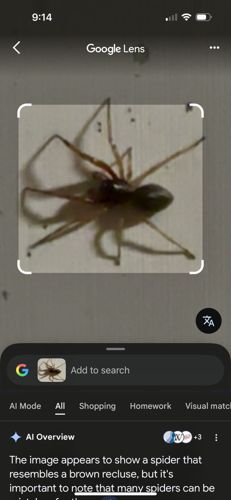Brown Recluse Spider
Scientific Name: Loxosceles reclusa
Order & Family: Order: Araneae, Family: Sicariidae
Size: Body size: 6-20 mm (0.24-0.79 inches), with legs extending further to about 25-30 mm (1 inch).

Natural Habitat
Brown recluse spiders prefer dark, secluded, and undisturbed areas. Outdoors, they can be found under rocks, logs, bark, or in other debris. Indoors, they commonly inhabit basements, attics, closets, storage areas, crawl spaces, and often hide in boxes, old clothing, or bedding.
Diet & Feeding
The brown recluse spider primarily feeds on small, soft-bodied insects like crickets, cockroaches, moths, and other spiders. They hunt at night, actively seeking out prey rather than relying on a web to catch them.
Behavior Patterns
Brown recluse spiders are nocturnal and solitary. They build irregular webs, often in undisturbed areas, which are not used for prey capture but rather as retreats. They are not aggressive and typically bite only when pressed against the skin, such as when getting dressed or rolling over in bed. They are known for their 'violin' or 'fiddle' shape on their cephalothorax, though this can be difficult to see and is present on many other spiders.
Risks & Benefits
Potential Risk: The bite of a brown recluse spider can cause a condition known as loxoscelism, characterized by necrosis (tissue death) due to the venom. The bite often starts as a small red mark or blister, which can enlarge and become a necrotic ulcer, sometimes taking weeks or months to heal. In rare cases, systemic reactions can occur. Potential Benefit: Like most spiders, they play a role in controlling insect populations, particularly household pests.
Identified on: 8/24/2025